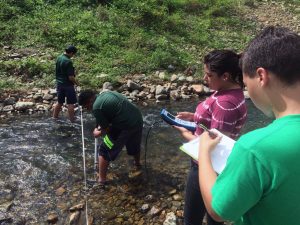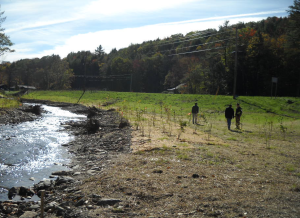1.4 How to Protect Biodiversity
There are many different aspects to conservation. A few are discussed below.
Research and Monitoring

Scientific research and monitoring are fundamental to understanding ecosystems and tracking species populations. Research data is used to help develop conservation strategies and then assess the effectiveness of those strategies. Community science can be used to gather data from large geographic areas (see What is Community Science for further details).
Habitat Preservation
Protecting natural habitats from destruction is crucial for the survival of many species. This includes establishing protected areas such as national and provincial parks that are protected from urban development. In London, we have protected habitats called Environmentally Significant Areas (see Biodiversity in London for further details).
Habitat Restoration

Habitat restoration is when degraded or destroyed ecosystems are returned to their natural state. This can include reforestation, wetland restoration, and reintroduction of native species. In Southwestern Ontario, many restoration projects return abandoned farmland back to natural habitat.
Government Legislation
Effective conservation often requires legal protections and policies at provincial, national, and international levels. In Ontario, the Endangered Species Act provides habitat protection for species classified as endangered or threatened. Additionally, the Invasive Species Act sets out rules to prevent the introduction and control the spread of invasive species that pose a risk to Ontario’s natural environments. Nationally, the Species at Risk Act (SARA) aims to prevent wildlife species in Canada from disappearing.
A Closer Look: How to Help
Even if you aren’t a scientist or conservationist, you can still help protect biodiversity. Listed below are examples of some ways that you can help.
Practice Sustainable Living
- Make small lifestyle changes to reduce the amount of resources we use.
- Take shorter showers, use public transit and buy second-hand items.
- Reduce, reuse, and recycle to minimize waste.
Support Conservation Efforts
- Support conservation organizations through donations and volunteering.
- Participate in local conservation projects like tree planting and habitat restoration.
Plant a Biodiversity-Friendly Garden
- Plant native species in your garden to support local wildlife.
- Avoid planting invasive species.
- Minimize the use of harmful chemicals.
Advocate for the Environment
- Raise awareness about biodiversity and its importance.
- Advocate for government legislation to protect our natural environments.
Protecting biodiversity requires lifestyle changes that prioritize environmental responsibility. Every small action counts. All of our actions can collectively lead to substantial positive impacts on biodiversity.


